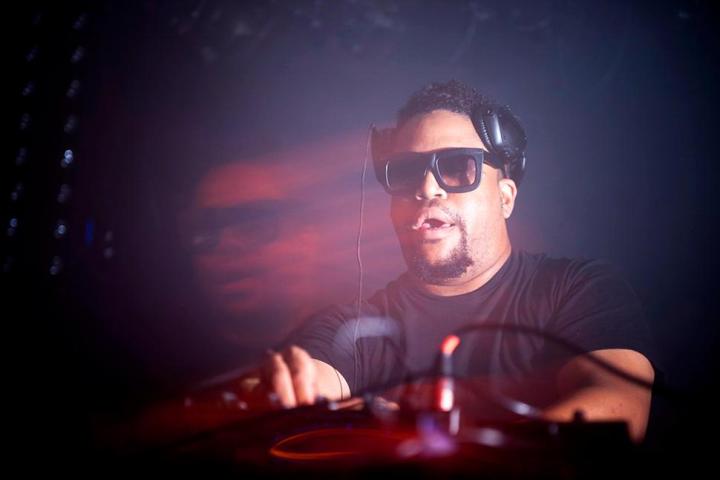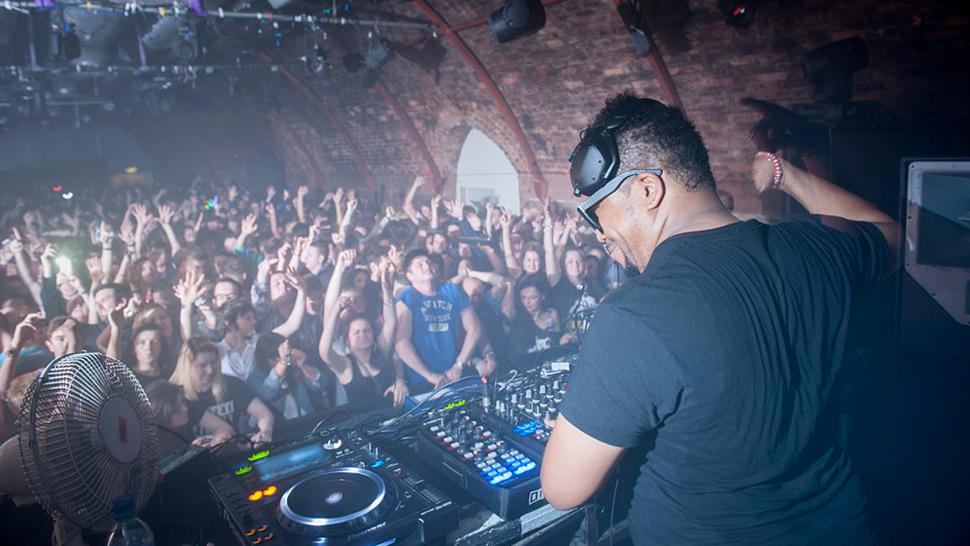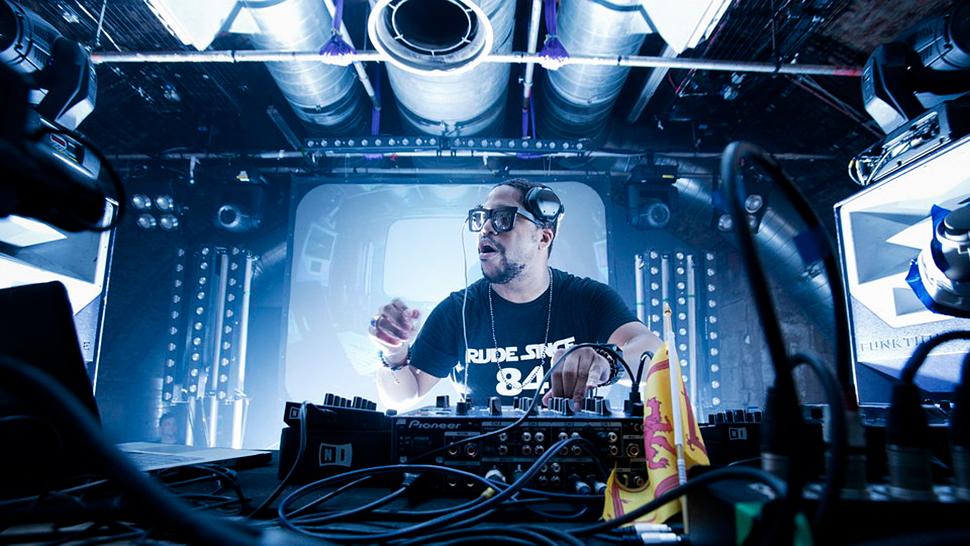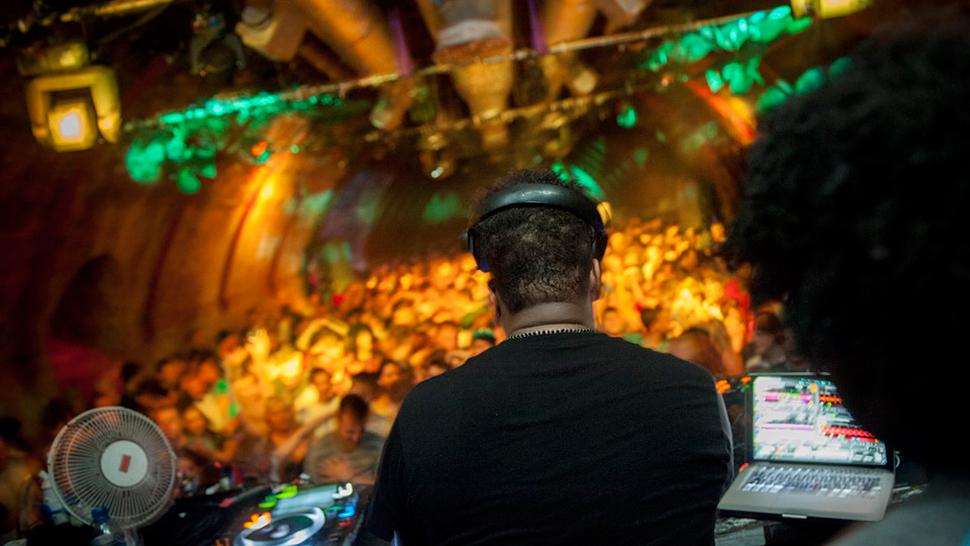
“There’s a lot of cutting and pasting and trickery — stuff you can’t get from going with a plug-in on your laptop.”
The pursuit of perfection has its own rewards — eventually. Just ask superstar house electroclash DJ/producer Felix da Housecat, who spent three intense years toiling in various mobile labs across the globe to concoct the ante-upping Narrative of Thee Blast Illusion, out now on various formats from No Shame.
“It was the hardest record I had to do because I was going through so many changes in my life,” Felix explains during a late-night Skype call to Digital Trends from London, just five hours before he boarded a plane to Dubai early this morning to get to his next DJ gig. “I kinda lived what I was dealing with, in a sense, so I put all of that energy into it.”
I’ve always been a very lo-fi, tape machine, underground kinda guy.
Narrative tracks like the pulsating and lustfully pleading Lookin 4 a Reason, the surface-noise blister of Codeine Cowboy, and the reggae-tinged free-for-all of The Natural, featuring Lee “Scratch” Perry, all showcase Felix’s meticulous attention to sonic detail — something the DJ/producer feels may be lost in modern production techniques. “I don’t think we have the discipline now that we had back then,” he explains.
“It’s so easy to throw a record together with no imagination to make it sound like one big compilation. For me, it’s like, you gotta put in the time if you want it to sound sonically right. For three years, my tour manager and production partner Devon [James Stewart] has been dragging this gear all around the world while I’m moving around. With all the crazy red tape going on to get to the end, I was like, ‘Devon, let’s just keep on tweaking this record.’ I tweaked it to the very last minute, bro.”
Felix and Digital Trends discussed how he crafts and layers his vocal tracks, why he avoids using plug-ins, and his ongoing super-tight ties to the ’80s.
Digital Trends: Narrative of Thee Blast Illusion is one of those records where every song is critical, so I’m glad you’re still into the album format.
Felix da Housecat: Thanks, Mike, I appreciate you getting that. Me, I don’t even think about when it’s going up on Spotify and these streaming spots. They gotta break it up, you know? I just put all my energy in every track. If they’re gonna break it up, each track is going to have to stand on its own. You know — all killers, no fillers.
How do you want people to listen to this record? Are you OK with streaming, or is a hi-res format the better way to go?
I’ve always been a very lo-fi, tape machine, underground kinda guy. I’ve never been over the top — I’ve always been about the feeling, the warmth. I don’t like to over-digitize things or have them be too clean and too clear. I like to have a little distortion.
You know, at the end of the day, people like you and me can appreciate it with a nice, good pair of headphones and listen to it when we’re on a plane or in the car. It just depends on the listener, but I’m cool with whatever.
We just had your man Devon on the line, who told us you’re using Access Virus for synthesizers and your soundcard is the Apogee Quartet interface, which is small enough to fit in his suitcase. That way, he could catch you in Atlanta, Ibiza, London, Vienna, Belgium — wherever you’re spinning or hanging, so you can lay down tracks whenever and wherever you want to.
Yeah, I would record all of my effects to, uh, to… I was going to say tape! It was crazy. Sometime we would record into Ableton, sometimes we would go into Logic, and then mix in Pro Tools. At the beginning of production, it was more like doing the melodies and tracking in Ableton.

I recorded all of my effects live, because I wanted to get the first generation, the first pass. I never use plug-ins for effects, ever. Just maybe at the end of production. Plug-ins today I don’t think are the same as outboard gear was back in the day. That’s how you can get it to sound a lot warmer. I would also use the Korg Kaoss Pad a lot.
Do you think using that kind of gear leads to more “feel”? Sometimes certain plug-ins can feel a little cold to me.
Definitely, and the plug-ins in the computer take forever to get to what you’re looking for, when I can just twitch a few knobs. For me, everything is hands-on, even when I’m laying the bass lines.
Devon, I call him the pilot of the ship. His job is to capture the magic, and then he might do a little sprinkle here and there. But I always go with the first take; I don’t even go with the sequencers. I just record it live, and then we’ll start gritting it up and everything. But I don’t even lay it on the grid at all
Would you agree this is an emotional record for you?
Yeah, that’s accurate. It’s an emotional record because that’s where the whole nostalgia thing comes in. I like melodies that can make you happy and sad at the same time, or remind you of the ’80s and stuff.
Well, Turn Off the Television is a total ’80s kind of track. I felt like I needed to get out some Day-Glo, or something.
Yeah, you had to go grab your Devo hat? (both laugh) I remember when I was working on that. I thought the bass line was so weird, but Devon was like, “No no no; keep going, keep going!” I said, “OK, I’ll keep going. It’s kind of strange. Let me put a bridge on the bass line, so it’ll at least grab my interest.” Once we got the bridge, we kept rolling with it and sticking with it. You’re the only person who’s called that track out, which I think is great. It’s one of my favorite tracks on the album.
For three years my tour manager and production partner Devon has been dragging this gear all around the world.
It’s one of mine too. The album has a certain kind of tone going before you get to the throb and kick of Turn Off the Television near the end. And I love hearing you say, again and again, “You can’t keep feeding all of this bullshit!”
(laughs) Right, right. That’s what TV feeds you, at the end of the day. No flowers growing in the nice sun and everything. I call it The Horror Show. They just talk about stuff that’ll drain your energy. Turn it off, you know? I went out to Chicago recently and I turned on the news, just because I was curious to see. I thought the anchors looked so creepy!
A lot of them have that stuffed-suit empty vibe. You could feed them anything to read, and they wouldn’t even know what they were saying.
That’s what they’re there for. No diss — don’t get me wrong, I’ll watch a little television, but when it comes to news, I just can’t handle it. But I love watching my Bulls, and the Bears. The Bears, man, they give me so much heartache.
I’m thinking you gotta do a Felix remix of The Super Bowl Shuffle someday.
That would be incredible, man. I love the ’85 Bears, man, I’m telling you.
I’d like to get into Is Everything Ok? a little bit. What are you using to alter your voice on that track?
Yeah, it’s funny — the machine I use on it is the Digitech DH-something [harmony processor]. Everyone was using Auto-Tune, and that sound is so overpoweringly robotic to me. My trick that people try to duplicate and can never duplicate — the thing about this machine is it takes your voice, your real voice. But then I add harmonies with a female singer, and then I’ll pan my regular voice on the left speaker, and then I might distort it. For me, getting the voice is the most tedious process. To lay down vocals, it takes like two days sometimes. It’s for a reason.
That track right there — I was singing those melodies on the first take and I was like, “Devon, take it back, take it back.” I was freestyling, and everything was coming out, so I would just keep it and layer it. I said, “Devon, should we add The Magic Box?” That’s what I call the TC-Helicon. That VoiceLive machine was the first one I added to my arsenal, and it reminded me so much of Camille, Prince’s alter ego on The Black Album [a legendary album Prince recorded in 1987 that was circulated underground but not released officially until 1994].
That’s why I wanted to say in Lookin 4 a Reason, “Camille ain’t got nuttin’ on me” — it’s sort of me calling out Prince like, “You can’t mess with me, with this Camille voice.” That’s kind of the shape of 75 percent of the album. This voice style sounds freaky, like on Candy Talk and Lookin 4 a Reason — you know, I’m just going to use this voice and merge it with The Magic Box, and then bring in my female singer to add the sexiness to it. It’s not just one voice-altering machine; it’s sort of like a mix of machines with human voices and Kaoss Pads. It’s headphone music. When you listen to it through your headphones, you can hear the panning and the trickery.
That’s where I’ve been living with it — in my headphones, where there’s always something new to discover. How many layers of vocals do we have on any given track, like Lookin 4 a Reason?
It’s like four or five. The main voice will be in the center, and then I’ll take the female and put it on the right, and then I might take have two voices, with one panned a little bit further.
I never use plug-ins for effects, ever.
Devon told us sometimes you have three voices talking, and then, just for one word, one of the voices drops out.
Yeah, that’s like a trigger on the left side of your ear.
I love the inflection on the female voice when she goes, “Why would I want to fuck you?” and then you hear the “you” repeat and fade away.
I’m surprised you noticed it, because she got cut off a little bit on the take. But it was the only take we had, because I needed her to send me that via Skype. I told her what to say, and all of that. Yeah, I love that break. I love that part.
When you’re layering vocals, sometimes you shadow the lead by like a millisecond behind, so we can hear the hint of more than once voice.
Yeah, good observation. It’s like a slap delay, but instead of using a Space Echo, I just move the track. I kept saying to Devon, “Just move it like a half-second back!” (laughs) Devon would be looking at me, like, “What do you mean?” and I’d say, “Just move it a half-second — now a little more, a little more.” That would be the track that would be panned, and I would have the main track a little before it. You’re the only person who’s caught that.
It must all take a lot of hands-on time.
There’s a lot of hands-on. Even when we used Melodyne [editing software] — not for making my voice sound like a robot, but more for when we’re layering harmonies and stuff, and we need to make sure things are falling right in key. One of the hardest songs to do on the album was Karma’s Catchin’ Hell.
That one has that super high vocal, and the slow-jam vibe —
Singing high for real! What happened was, when we used the Helicon, the Helicon would take me off-key when I went high, when I would be in key! It would take us five hours to put that in key and program it. The Helicon was throwing me off.
The other thing about that one is how Kavinsky ripped me. He ripped me on the Drive soundtrack [on Nightcall]. He ripped me to pieces. You might as well have said “Felix da Housecat scored Drive the movie.” People would ask, “Have you seen Drive?” And I would go, “What’s Drive? No.” “Aww, man, this dude jacked you!”
So I was like, “OK, I’m gonna jack him back — but in the right way.” No diss, because I think it’s incredible. It was sort of like Kavinsky inspired me to copy myself. So when I hit the high point on that one, that’s all Phil Collins right there.
That’s your Against All Odds, in a way, right?
That’s right! (laughs) You know, when I’m sitting there, I’m not saying, “I’m going to rob all my heroes from the ’80s.” All of that stuff runs through my veins, and they’re all like teachers to me.
What was the first album you ever bought?
We were talking earlier how we’re both from the same neighborhood in Chicago. You remember going a little further out to find Hegewisch Records [now long since closed]? I bought my first vinyl there — Rod Stewart, Tonight I’m Yours (1981).
That’s an interesting call. Why did you buy that album?
I was a fan of Young Turks, man, so I had to buy the album (sings): “Young hearts be free tonight.” Dew now nu neow…
Melody always was a big thing for you.
For me, it’s all about the melody. They call me the Melody Man on sessions and stuff. I try to explain to people who are trying to get advice off of me, “If you’re trying to do something that’s going to sound good 10 years or more from now, melody is king — melody and arrangement.”
It’s a timeless thing. Since we both grew up in the ’80s, anytime you hear that gated drum sound now — ugh! It just ruined some songs.
Exactly, man. And what I learned from Prince — I studied him so much from the ’80s — he would save his best melody for when the song was going off! I miss ’80s Prince, but I understand he can’t repeat himself. The last album I bought from him was probably Lovesexy (1988).
And it was all one track on CD. You had to play it all the way through.
Yeah, but it was so groundbreaking! It’s like, “You will listen to this whole album!”
Last thing: analog or digital, or both?
For me, I’ve always recorded through an analog board, and bounced it over to digital. I don’t play anything in the box. Everything is out of the box. I don’t do anything inside of the computer’s head, you know? Everything comes out and feeds the brain… and comes back out in fairy dust. (laughs)







